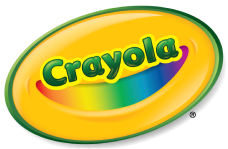In 1902, Crayola Crayons were invented by Binney & Smith and first offered for sale in 1903. The trade name "Crayola" was coined by Mrs. Edwin Binney, combining "craie" (French for chalk stick) and "oleaginous" (oily).
Crayola manufactures over 3 billion crayons each year, primarily made from paraffin wax and color pigment. Learn more about Crayola’s colorful history here.
If you have additional questions, we would love to hear from you! Feel free to call or text us at 1-800-CRAYOLA weekdays between 9 AM and 4 PM Eastern Time. If you would prefer to send us an email, visit our contact us page.
Related Questions
Explore answers to common questions, helpful stain removal tips, and creative ideas for making the most of our art supplies and free resources!
-
Throughout Crayola's history, several crayon colors have been retired, marking significant moments in the evolution of our vibrant palette.
1990
For the first time in Crayola history, eight colors were retired and placed in the Crayola Hall of Fame: blue gray, green blue, lemon yellow, maize, orange red, orange yellow, raw umber, and violet blue. Eight new colors were added: cerulean, dandelion, fuchsia, jungle green, royal purple, teal blue, vivid tangerine, and wild strawberry.2003
Celebrating a century of bringing color to the world, Crayola introduced four new colors named by Crayola fans! To make room for the new hues, we bid farewell to blizzard blue, magic mint, mulberry, and teal blue. The four new colors that were introduced are: inchworm, jazzberry jam, mango tango, and wild blue yonder. Kudos to our hue heroes - the consumers who voted in the "Save the Shade" campaign, ensuring burnt sienna stayed in the pack.2017
To mark National Crayon Day on March 31st, we announced Dandelion was leaving the pack. To honor this iconic color, we sent Dandelion on a retirement tour to his favorite places. His replacement, Bluetiful, was announced on May 5, 2017.Looking for more historical facts about our colorful company? We've got them on the Crayola History page!
-
Crayola® Crayons are made using primarily paraffin wax and color pigment. While the basic ingredients remain consistent across all colors, variations may occur in special effects crayons.
Our crayons are crafted through a process that involves melting paraffin wax and blending it with color pigments. This mixture is then poured into molding machines where it solidifies in four to seven minutes. For a behind-the-scenes look at the Crayola crayon manufacturing process, watch the video "You've Got Crayola Crayons" on YouTube.
-
Crayola uses two types of label adhesives, water-based and hot melt. To remove Crayola crayon labels, first try soaking the crayons in warm soapy water for a few minutes. Rinse and dry the crayons before using. If this method is unsuccessful, an adult can peel the label off by hand and use a dull knife to scrape off any remaining paper.
-
Crayola® Crayons are made primarily from paraffin wax and color pigment. This process is the same for all Crayola Crayon colors. The paraffin wax is melted and mixed together with pre-measured amounts of color pigments.
We purchase the powder pigments and either use individual colors or mix the pigments to produce the many colors of Crayola crayons. The hot wax mixture is poured into molding machines. In about four to seven minutes, the crayons cool and become solid. We manufacture almost 3 billion crayons each year.
Take a peek at the manufacturing process here.
Check out our FAQ’s below for even more details!
-
According to the Merriam-Webster Dictionary definition of "crayon", the proper pronunciation of crayon is in two syllables: `krā-än. However, variations in pronunciation may occur due to individual and regional dialects. It's important to note that "crayon" is a generic term, while Crayola® is our company name and a registered trademark brand.
